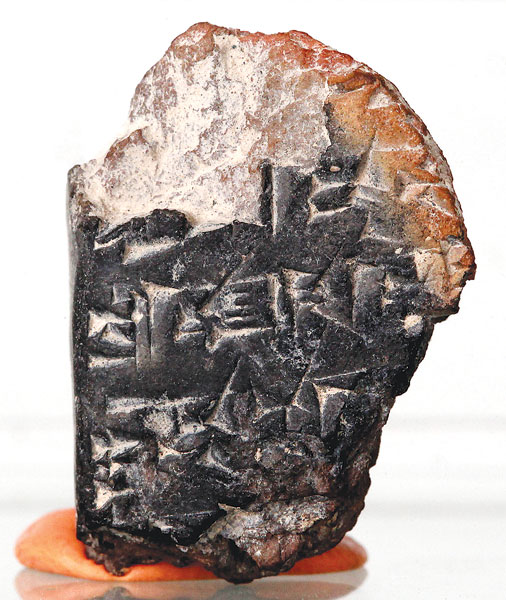Image Details

Courtesy Eilat Mazar/Photo by Sasson Tiram
Not all of the dirt at the sifting operation comes from the Temple Mount. Having witnessed the success of the project, other Jerusalem archaeologists have begun sending bags of their excavated soil to Barkay and Zweig for wet-sifting. Eilat Mazar did just that with soil from her excavation just south of the Temple Mount, where she believes she has found part of the Solomonic city wall. The wet-sifting increased the number of Mazar’s small finds by 95 percent and produced this small fragment of a cuneiform tablet. The baked clay piece is inscribed on both sides with a total of nine lines of text written in the Akkadian language (the lingua franca of its day). The text is too fragmentary to reconstruct beyond a few isolated words, but scholars have dated it to the 14th century B.C.E., making it the oldest piece of writing ever discovered in Jerusalem. According to Tel Aviv University petrologist Yuval Goren, the tablet’s clay is local, so it is most likely an archived copy of a letter written by the king of Jerusalem to the Egyptian pharaoh, very much like the famous Amarna letters discovered at el-Amarna in Egypt. The quality of the writing on the new tablet confirms evidence from the Amarna letters that Jerusalem was a thriving city with skilled scribes during the Late Bronze Age.
